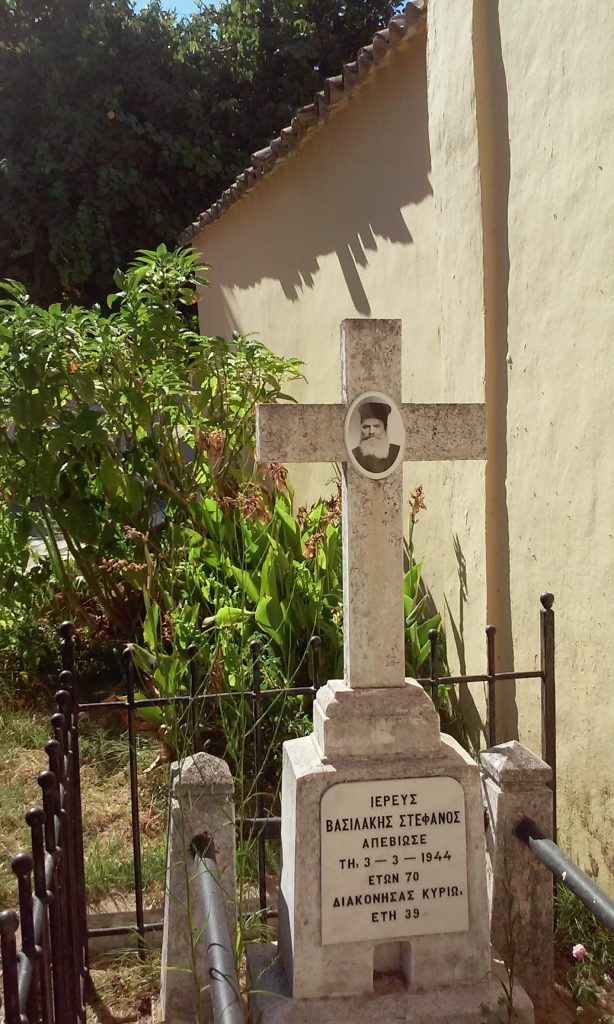On the hill in Moraitika, at the center of the old village, there is a small church that I used to visit occasionally for Sunday mass during my long summers in Corfu in the 1980s.
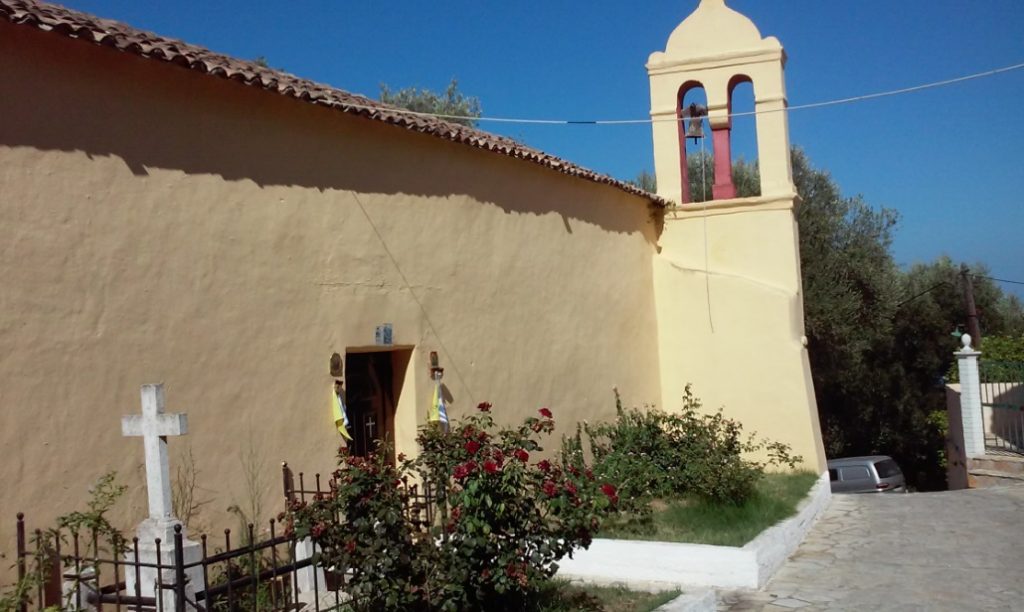
This old church — Agios Dimitris — was still in operation back then, and it was the only one in the village at the time. It was erected by the Papadatos family, whose (now derelict) estate house is situated behind it.
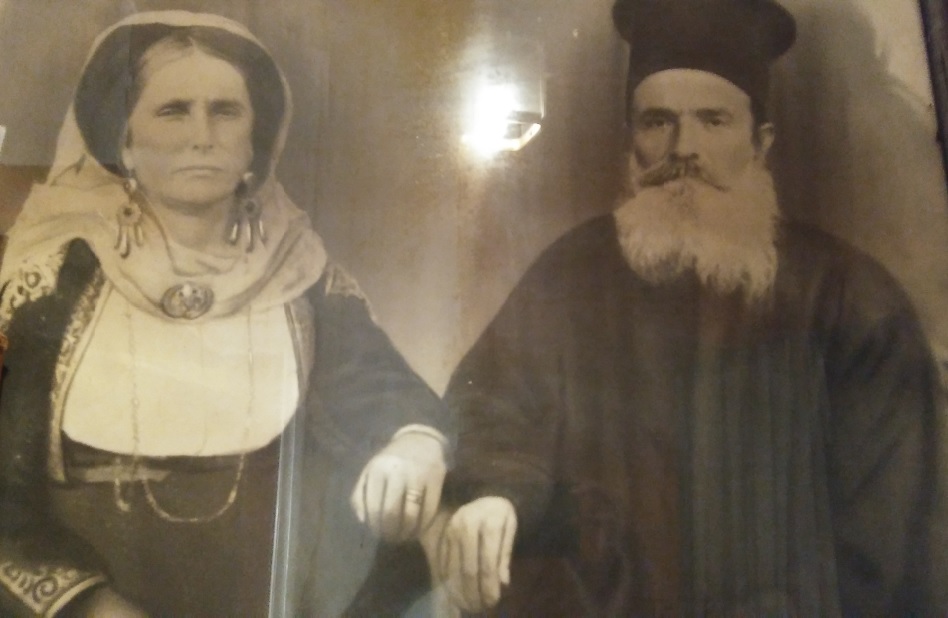
One of its early priests was my great-grandfather, Stefanos Vassilakis. He and his wife Olga built a house for their big family a stone’s throw away from the church. Part of their house was used as the school of the village. Other than his two main professions, my busy great-grandfather also worked his own land (situated in two different parts around Moraitika: behind the Coop supermarket, and on the side of the mountain over Miramare Hotel).
Many of the elderly locals still remember him working his land. Apparently, he did this wearing his priest’s robe!
During the German occupation, he was in his bedroom on the upper floor one night when he heard the unmistakable heavy footfalls of military boots echoing from outside. It sounded like a band of soldiers rushing down the lane. This was a scary time for the locals so, unsettled, he hurried down the internal staircase so he could peek through the front door. In the commotion he missed his step and fell down the stairs, breaking his leg. Sadly, he suffered complications from the fall which led to his death at the age of 70.

This is a picture of my great-grandmother, Olga Vassilakis (nee Vlachos), with other family members. Being a widow at the time, she was wearing black and the traditional headscarf. She is pictured with her son-in-law (left) and two of her children at the doorstep of the house in the 1950s. The locals referred to her as the ‘Presvytera’ or the ‘Pappadia’ – both names meaning ‘wife of the priest’, with the latter title being less formal.
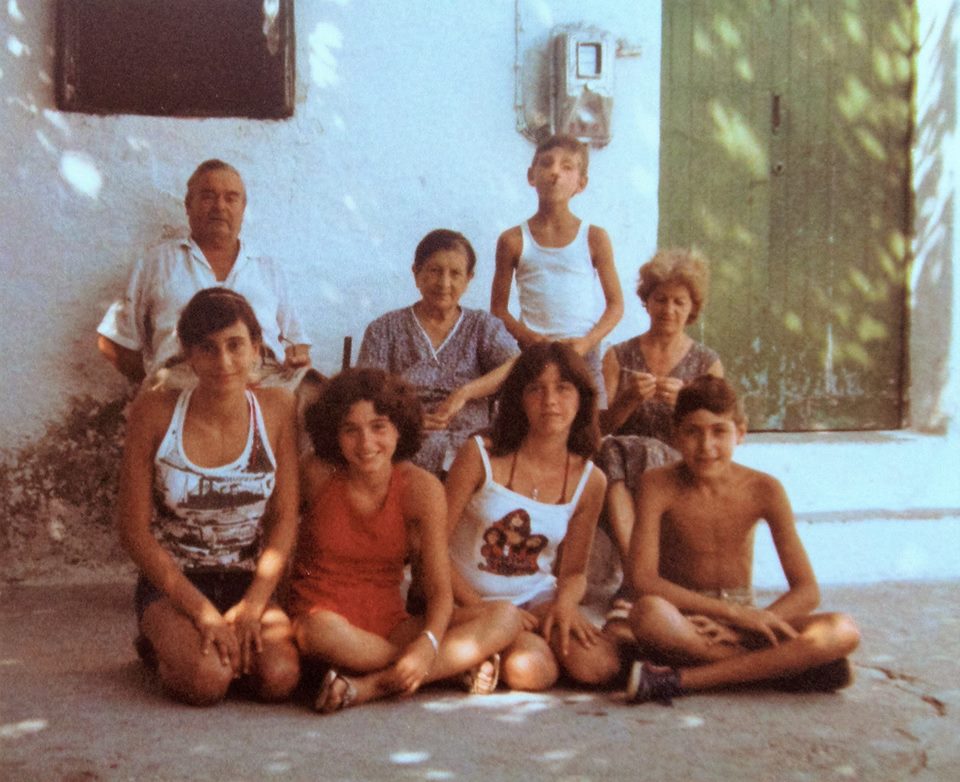
This photo was taken in the 1970s on the same doorstep. Sadly, I never met either of my great-grandparents, but it’s a consolation to know I have lived all my life treading their footsteps. In this photo, I am photographed with my sister and a few members of the Vassilakis family.
Interesting tidbit: According to my grandmother, the name Vassilakis originates from Crete. Other than Moraitika, the name is also met in the villages of Zygos, Valanio and Sinarades. The Vassilakis of Moraitika originate from Sinarades where there’s a legend about the family name! According to Granny’s story, at some point the Vassilakis were split into the ‘rich’ ones and the ‘poor’ ones (our family came from the latter sadly 😛 )
So how did some of the Vassilakis got rich? Well, legend has it that a man from the family once found pirate treasure in a chest on Agios Gordis beach and took it home! The pirates came back to get it and searched high and low but never found it…
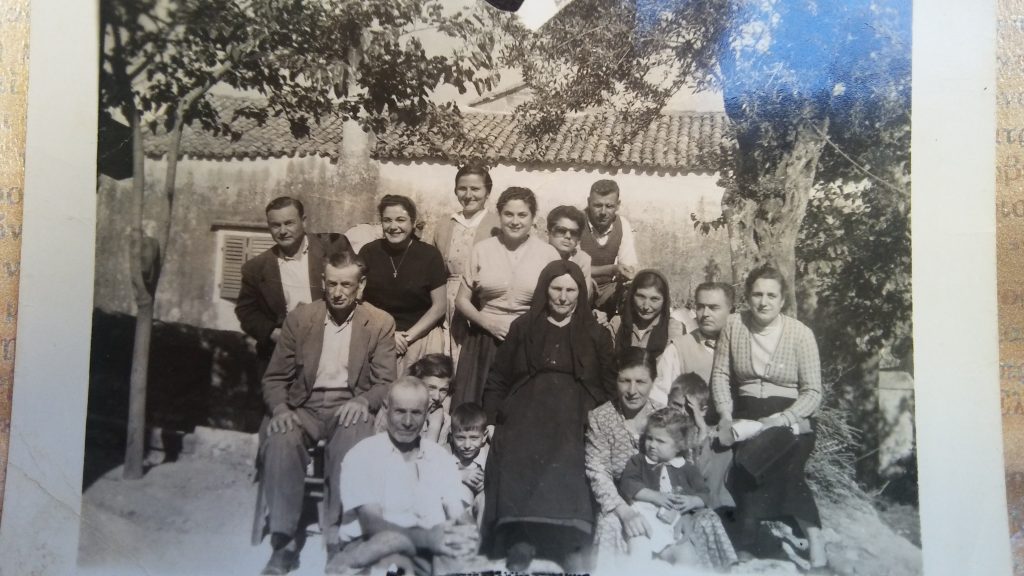
Here, my great-grandmother is pictured with family (both Vassilakis and Vlachos) before the Koukouzelis estate. Again, sometime in the 1950s. Would you believe, the mulberry tree on the left and the olive tree on the right still stand today. This yard has been both my ‘dining room’ and playground as a child for many blissful summers, more often than not, under the generous shade of the mulberry tree from the 70s onwards.
Interesting tidbit: If you’ve visited Moraitika in the 80s-90s, you may be able to identify in the above photo the late Petros Vlachos who ran The Crabs (Kavouria) on the beach at the time. He’s a little boy in this picture (front row, crouched on the left of my great-grandmother.
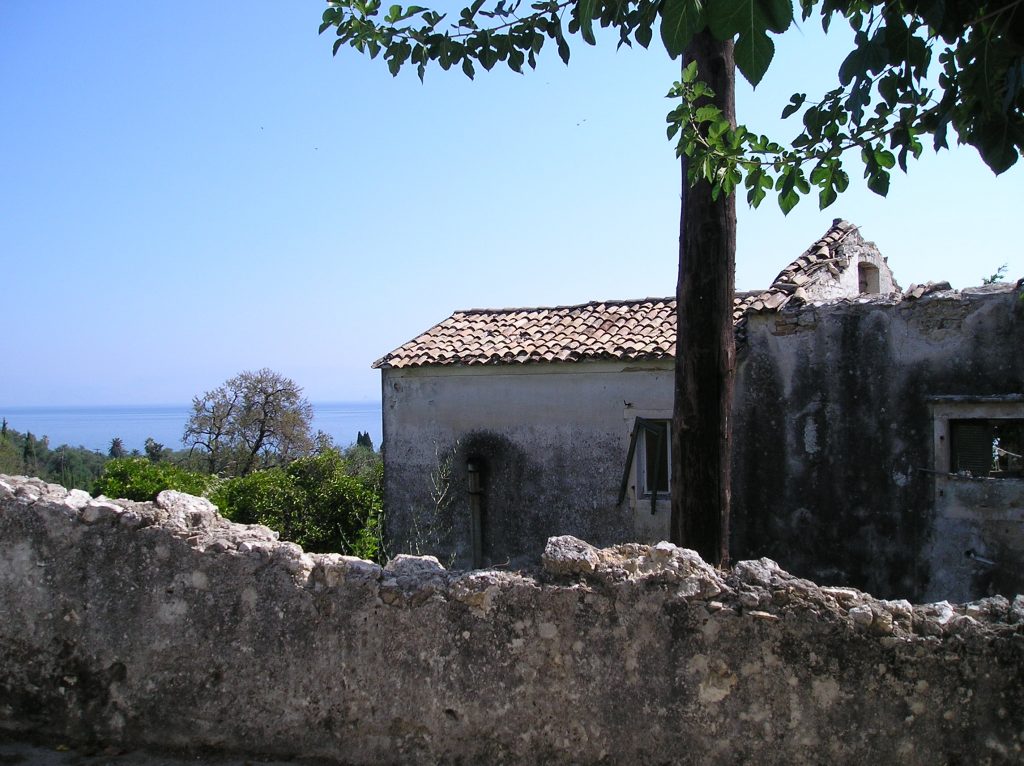
Visitors to the hill in Moraitika today may recognize the Koukouzelis Estate House in this photo. The whole property was acquired by the council in the recent years to be used for cultural events. It is situated very near the church.
Interesting tidbit: The name ‘Moraitika’ is derived from the word ‘Morias’ which is another name for the Peloponnese (the part of Greece that looks like an inverted hand). The first inhabitants of Moraitika were emigrants from Morias, and the people were referred to as ‘Moraites’, hence the name.
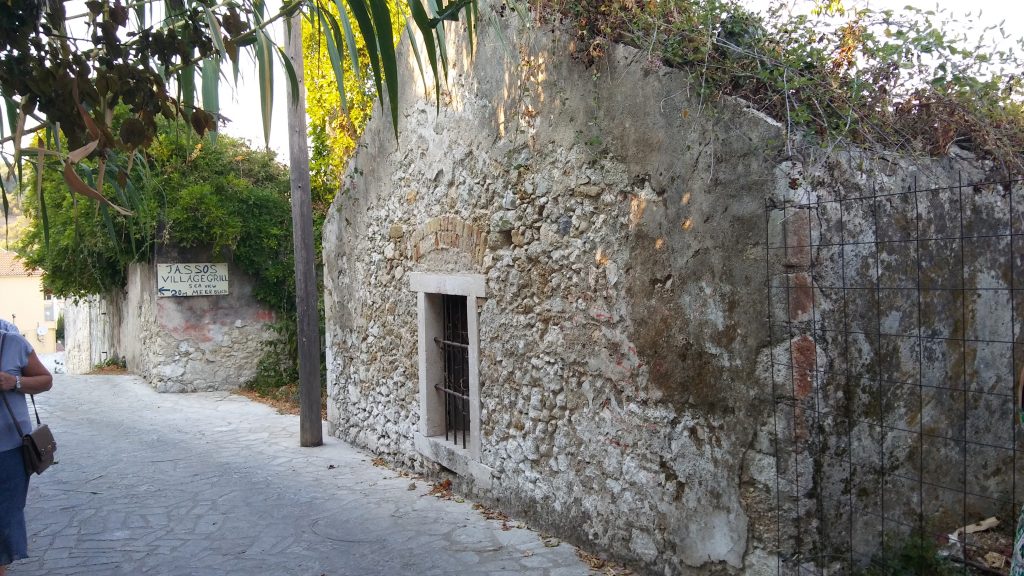
This picture was taken in the lane that leads from the old church to the Koukouzelis Estate.
The derelict stone wall with the window is part of the estate. According to one of my cousins who ventured inside once as a child, there was a large library behind this wall. Now, with the overgrowth of bushes and creeping vines that have accumulated over the years it is impossible to decipher anything when peeking through the window.
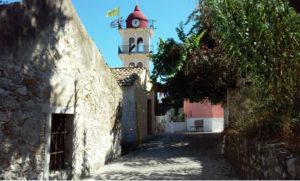
This is the same lane looking towards the old church (yellow wall). You can also see the belfry of the current church of Moraitika that stands beyond it. This one was under construction for at least one year back in the 1980s, something that used to worry my grandmother a great deal… You see, she was convinced that it attracted all sorts of evil spirits while it stood as a building site.
Oftentimes, we’d hear the shrill cry of a certain kind of owl at night that Granny called a ‘strigglopouli’ (screeching bird). She’d always say it was a bad omen as, apparently, it signified an impending death in the village. She’d also say the sound was coming from the church building, which made sense as its roof was incomplete and thus open to the elements at the time, making it easy for all sorts of night birds to nest there.
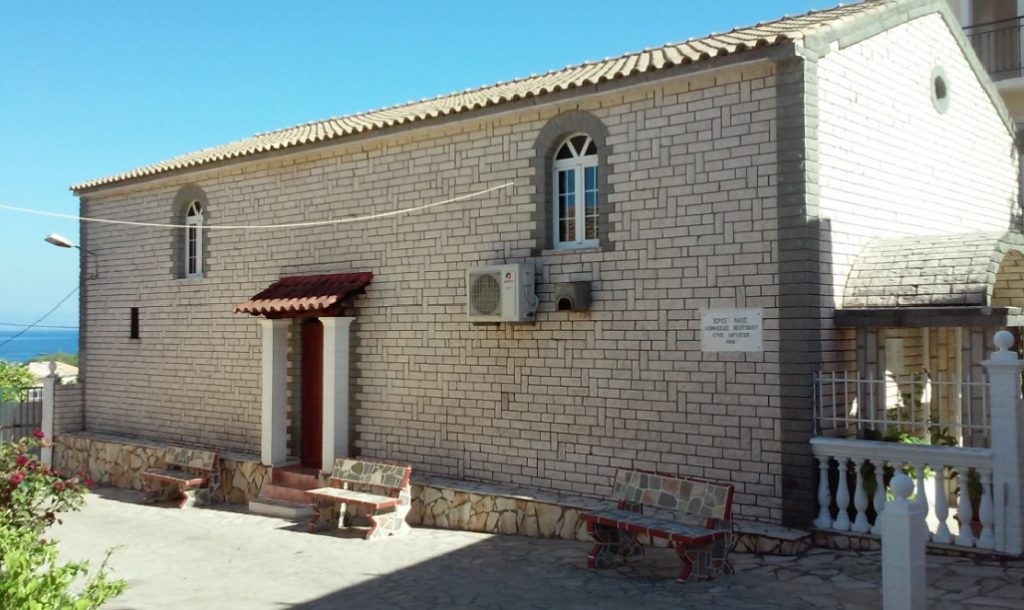
When the church was sanctified and began operating, Granny said she never heard those birds’ bloodcurdling cries echo from the church again. I never really believed any of that, but Granny had a way to tell these things and they always had my vivid imagination going!
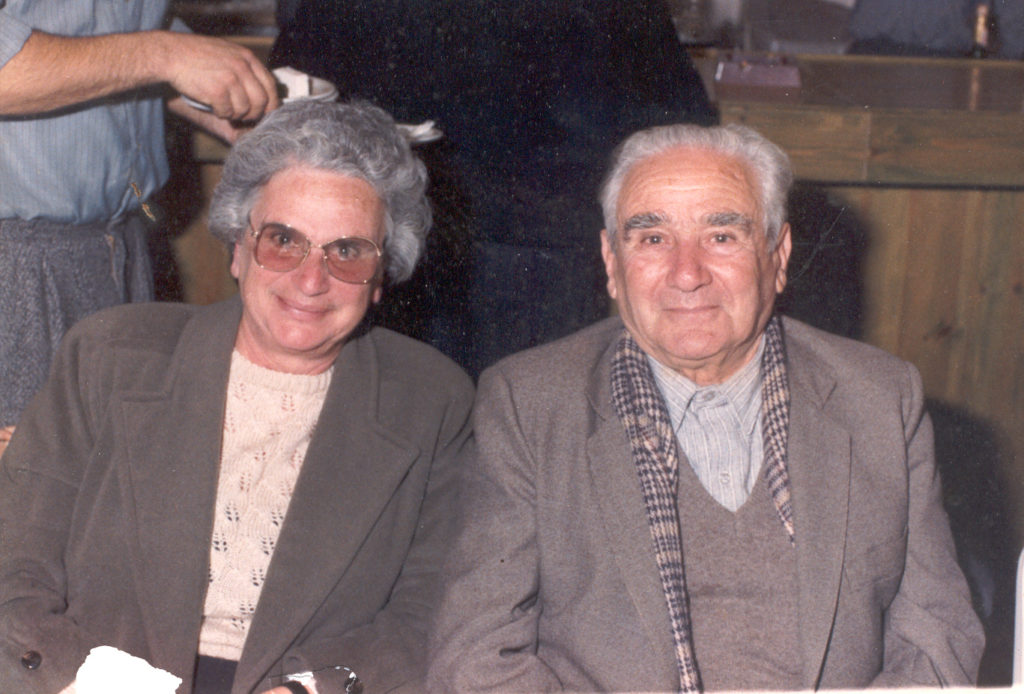
This is a photo of my grandparents, Spyros and Antigoni Vassilakis. Granddad was a proper ‘papadopaidi’, i.e. the son of a priest, meaning he was an avid churchgoer and loved to chant at the church given half the chance. Throughout my childhood in Athens I remember him chanting on Sunday mornings as he listened to mass on his portable little radio. My grandparents lived in the city at the time but once they relocated to Moraitika in the late 1970s, Granddad became a regular visitor and an occasional ‘psaltis’ (church singer that chants the gospel) at the old church of the village and, later, at the new one as well.
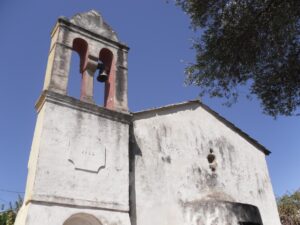
The private church of Agios Dimitris opens only once a year these days – on its festival day on October 26.
This is the belfry of the old church. The year of its erection is 1905 according to the plaque you can see here. I find it a real pity that it was left to deteriorate in this manner – same goes for the old estate houses (Koukouzelis and Papadatos) beside it that barely stand. At least, the facade of the old church is kept tidy and freshly painted, and the tourists seem to be interested in my great-grandfather’s grave a lot…
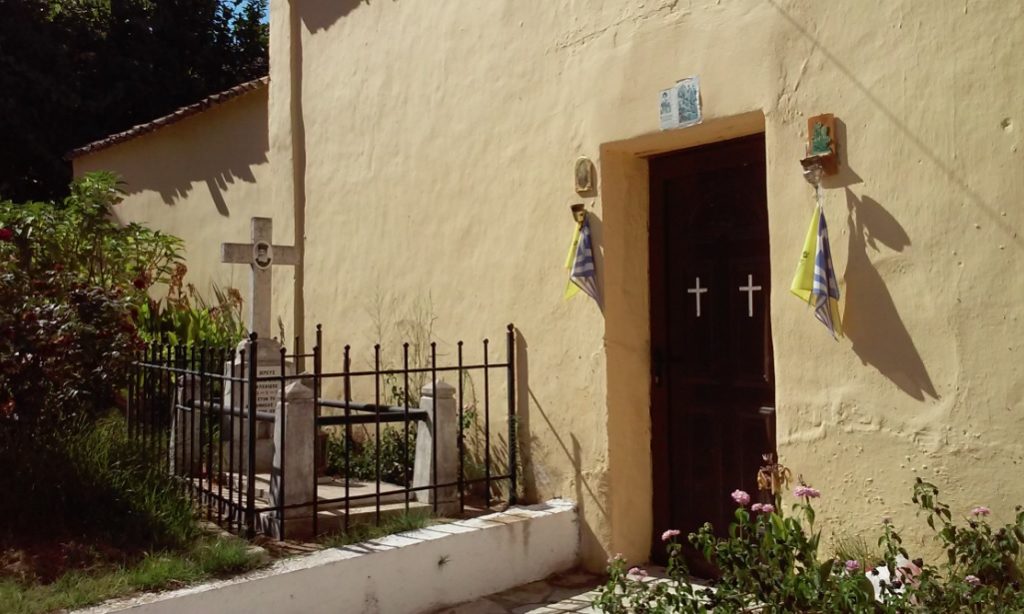
I often see people taking pictures of it when I pass it by. Other times, I find flowers on there, and in the recent years, oddly enough, even scattered coins! I can only assume it is customary in a country somewhere to throw coins on graves. In any case, it’s a nice gesture and always makes me smile.
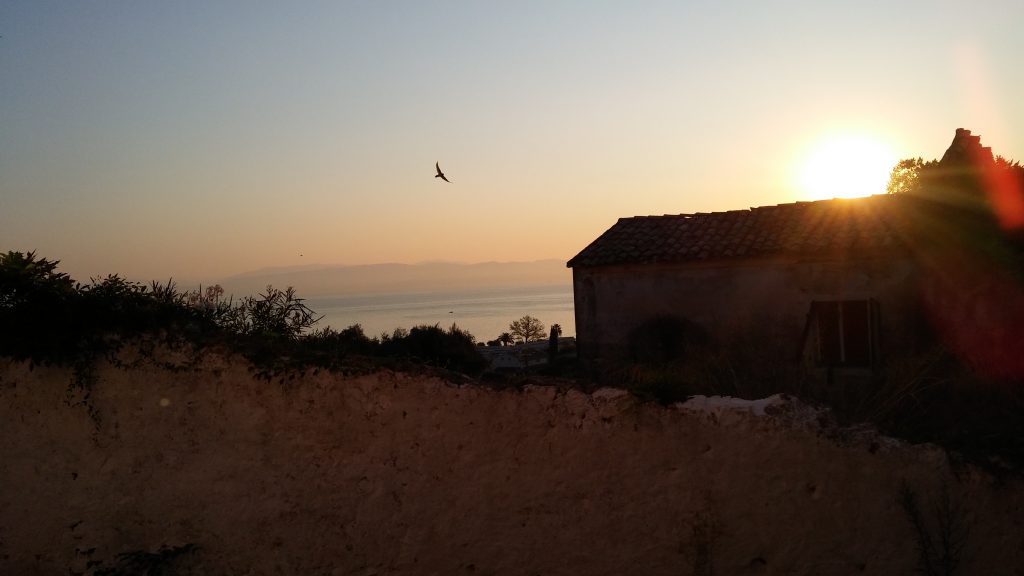
If you ever visit Moraitika, make sure to venture uphill to see the church yard and do take a walk towards the Koukouzelis Estate as well, if only to enjoy the sea view. The sunrise is always a good time!
If you ever visit Moraitika, make sure to venture uphill to see the church yard and do take a walk towards the Koukouzelis Estate as well, if only to enjoy the sea view. The sunrise is always a good time!
Many thanks to my cousins Evgenia Vassilakis and Sofia Tsatsanis who provided the old family photos!
YOU KNOW WHAT THEY SAY… SHARING IS CARING! Tweet this to spread some love!
Churches of #Corfu #Moraitika and village #history #20thcentury Share on X3 FREE books for you! Sign up below to receive them instantly!
NEW! Clean Christmas romance. Single mother Cathy Roussos gave up on love long ago, and veterinarian Alex Rallis doesn’t believe in it, but one magical Christmas on a Santorini farm might just change everything…
Check it out on Amazon Read a FREE sample!
Clean romance short read, FREE with Kindle Unlimited. It’ll transport you straight to Corfu to experience summer in an idyllic Greek seaside village. The story is inspired from the author’s love for Moraitika and its people. Now, also available as an audio book! Visit Amazon
Beach fun and sweet romance mixed with magic spells and bird shifters! The Raven Witch of Corfu is an original story that will rivet you with its unrelenting suspense. The final twist will blow your mind! Available in paperback , box set or 4 kindle episodes! Visit Amazon
For my delicious Greek recipes, go here.
Planning to visit Greece? Check out my FREE guide to south Corfu!

